#Leo Widrich
Explore tagged Tumblr posts
Text
We spend a lot of energy looking for shortcuts to save time, and sure, those shortcuts add up. But when I look back, my biggest time regrets aren't spending too much time on Twitter or mismanaging my daily tasks. Those are bad habits, but there are bigger, more systematic time wasters that have really gotten in the way. Fixing these will free up a massive amount of time and energy.
Not Asking for Help
My first week on my first job out of university, my boss handed me a huge spreadsheet. He told me to organise it in a way that made zero sense to me. Being a quiet, timid person, I simply nodded, walked back to my desk and stared at that spreadsheet for like an hour, hoping to make some sense of it (yep, just like George Costanza and the Penske file).
Finally, my coworker came in, and I confessed I had no idea what to do. He broke it down for me, then dropped some advice that's stuck with me ever since: "You might feel dumb asking questions, but you look dumber when you don't get it because you failed to ask."
It was harsh, but true. And not only did I look like an arse, I could've also saved a fair amount of time that day by simply asking my boss what he meant. It made me wonder how much time I'd wasted by not asking for help over the years. As dumb as you might feel asking questions, it's the fastest way to get an answer.
Similarly, asking for help is a great way to, well, get help. This is why networking and finding a mentor are hugely valuable. If you feel stuck in your career or need to learn new skills and have no idea how to get started, talking to other people in your field will go a long way. Even if it's just shooting someone a short email, asking for help is like a shortcut for your career. Try Leo Widrich's formula for asking for help via email:
2-3 sentences of honest appreciation. There is a reason you are asking someone for help. They have a lot of experience in that field, worked on a startup/idea related to what you are working on or else. If you do this, it shows them you have thought about why picking them out to ask for help.
1 sentence that states a single, focused question people can give you an answer to. Here is one that worked very well when I asked Noah:
"What was the single, most valuable user acquisition strategy for Mint after you hit 100K users?"
Here's another way to look at it: if you're not asking for help, you're probably not challenging yourself enough. If you have all the answers, you're not learning new skills, trying new things or moving forward and out of your comfort zone. There are a handful of reasons we don't ask for help, but it's usually because we're too proud or scared, and that's a huge waste of time, because it keeps you from moving forward.
Trying to Make Bad Relationships Work
Relationships require maintenance, but there's a difference between maintaining a good relationship and trying to force a bad one that doesn't make much sense to begin with.
There's a lot of emotion in romance and friendships, so sometimes it's hard to tell when you should keep trying or you should just call it quits. Like a lot of people, I made some common bad decisions that wasted both my time and the time of the person I was with. For example:
There are good reasons for wanting to make a relationship work, but those aren't good ones. They cloud your judgment, prolong your unhappiness and distract you from things that matter to you most. At the same time, it's hard to say all bad relationships are a total waste of time, because you learn a lot about yourself from them. That's a valid silver lining, but still, the sooner you learn those lessons, the better.
Similarly, not dealing with the emotional impact of a breakup is also a big waste of time. When a relationship ends, we usually go through the typical stages of grief associated with loss. It's easy to get comfortable with denial and convince ourselves we don't really care and we're fine. In reality, ignoring the pain only prolongs it. Our work suffers; the rest of our relationships suffer.
Dwelling on Your Mistakes and Shortcomings
Learning from your mistakes is one thing. Dwelling on them wastes your time, diminishes your confidence, and keeps you from getting on with your life.
Dwelling also makes you more apt to repeat your mistakes. In a study published in the Journal of Consumer Psychology, researchers asked subjects to spend money during an imaginary trip to the mall. Before "shopping", some subjects were asked to recall a past financial mistake. They found those subjects were more likely to incur debt. A press release for the study concluded:
Perhaps the most surprising, Haws said, is that searching through the past can negatively affect behaviour, depending on the ease of recall, even when past examples are positive...Instead of dwelling on the past, Haws said, her research into behaviour suggests that setting goals for the future can positively change present behaviour...In short, if we want to have better self-control, "Look forward," Haws says. "Don't look back."
When you think about your own experiences, it probably makes sense. Dwelling makes you feel like a failure. When I feel like a failure, it's easy to tell myself there's no point in trying, because I already suck. (Hence, getting further into debt when you already feel like an overspender.)
Of course, you don't want to skip over your mistakes and ignore them either. The goal is to glean something from them, then release the failure. I like Emilie Wapnick's process for doing this:
In order to let the past go, you must forgive yourself officially.
Feel the embarrassment or shame one final time. Really feel it throughout your body. Next, tell yourself that everyone makes mistakes and you know you that that outcome was not your intention. It was an accident. Finally, make the decision to forgive yourself and do it. It helps to even say it out loud.
From now on, it's OK. You are forgiven.
Every time the thought comes back, simply remind yourself that you have already been forgiven, so there's no reason to feel bad anymore. Then push the thought away.
One of my other big time regrets is not allowing myself to fail out of fear of my own shortcomings.
For years, I stayed in a comfortable place and didn't try to do things I wanted to do. I wanted to travel after high school, but I went to university close to home instead, because I was too shy to meet new people, and I was afraid I couldn't make it in another city. After university, I wanted to be a freelance writer, but I decided to find a more stable, accessible job instead, because that was easier. There's nothing wrong with wanting to live a stable, comfortable life, but I was doing it for the wrong reasons: because I was afraid to fail.
Eventually, I got tired of this. I decided to find work I actually enjoyed, travel more and live somewhere else. I made a ton of mistakes along the way, and even when I did succeed, I felt like an imposter. Still, I think the bigger mistake was not trying sooner. Even if I failed, I would have learned from my mistakes much sooner.
Worrying Too Much About Other People
It's easy to waste time worrying about other people, too. Don't get me wrong — your friends and loved ones mean a lot to you, and you want to spend time nurturing them. But we also spend a lot of time fretting over problems that don't matter in the long run.
For example, I spent years getting annoyed with people who undermine me. I complained about them, tried to understand them, wondered what was wrong with me that I inspired that kind of behaviour. Those habits always lead to a dead end, because they didn't involve action. The older I got, the less tolerant I became of this behaviour, and I learned to nip it in the bud.
I also indulged another time wasting emotion: jealousy. I compared myself to everyone, wanted what they had, and felt inadequate. Like most negative, destructive feelings, the first (and biggest) step to overcoming it is understanding it.
I paid attention to my jealousy and what triggered it, then learned that it was less about the other person and more about my own feelings of inadequacy. In short, I embraced that jealousy. Envy is a bit different, but it often comes from the same place, and here's what writer Trent Hamm suggests in dealing with your envy:
The question is, why do you want it in your life? I like to use the "five whys" when handling a question like this. Whenever I'm trying to answer a "why" question, I repeat it five times, asking it of the answer I come up with for each question. When you identify a particular strong desire that you have, step back for a moment and break it down into small pieces. Then, see if there isn't a way for you to address those smaller pieces in your own life. Again, let's take that international trip. What elements am I desiring when it comes to that trip? I want to expose my children to different cultures…. The thing is, when I start breaking that trip down into small pieces, I start seeing pieces that I can easily incorporate into my own life.
Once you understand why you feel jealous or envious, you can take action to take care of the problem, whether that means processing the emotions or coming up with goals for yourself. Either way, that's a lot more productive.
Most of us are probably guilty of all of these at some point, and really, they're human nature. Regret is another big waste of time, so there's no point in beating yourself up over these. The sooner you learn from them, though, the sooner you can free up your time and energy to live the life you want.
0 notes
Text
قصة نجاح شركة بافر
قصة نجاح شركة بافر
جمعة مباركة، قصة نجاح شركة بافر (Buffer): من 0 لـ5 ملايين دولار في العام أُسست شركة بافر العام 2010، والآن تجني نحو 5 ملايين دولار سنويًا. كيف تمكنوا من تحقيق هذا؟فيما يلي إليك خطوات نمو شركتهم: في شهر نوفمبر عام 2010، أطلق طالبان يعيشان في إحدى الغرف الجامعية في المملكة المتحدة، النسخة الأولى من موقع بافر والتي كانت عبارة عن برنامج لجدولة التغريدات. حيث كتب جويل غازكونييه (Joel Gascoigne)…
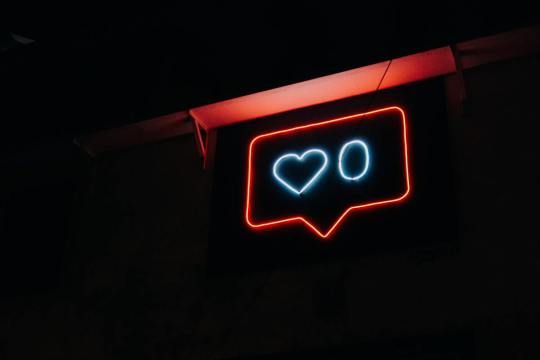
View On WordPress
#AngelPad#Buffer#Joel Gascoigne#Leo Widrich#NoIndexed#Robots.txt#widget#أداة إدارة الشبكات الاجتماعية#أداة بافر#تزويد#جدولة منشورات#جدولة منشورات تويتر
1 note
·
View note
Text
Creativity
Collaboration, observation, freedom (though not necessarily complete freedom) are the first couple words that come to mind when I think of creativity and what it means to me.
For collaboration I think of studying film and audio production in college; whether it was shooting a film or working in a recording studio. Collaboration was not only essential from a productivity standpoint, there were simply too many tools at your disposal to run them all by yourself, but being able to bounce ideas off of your peers always resulted in a more inspired final product. I came to especially value and appreciate the collaborative aspects of my time in undergrad after being in a string of positions post college where most of the work I was doing was isolated.
Observation in just trying to take notice of the world immediately around me as well as pondering on what makes the things I enjoy tick. Ultimately I think of it as constructing a pool of ideas that I’m able to draw from in the future. I immediately think of this quote by the filmmaker Jim Jarmusch.
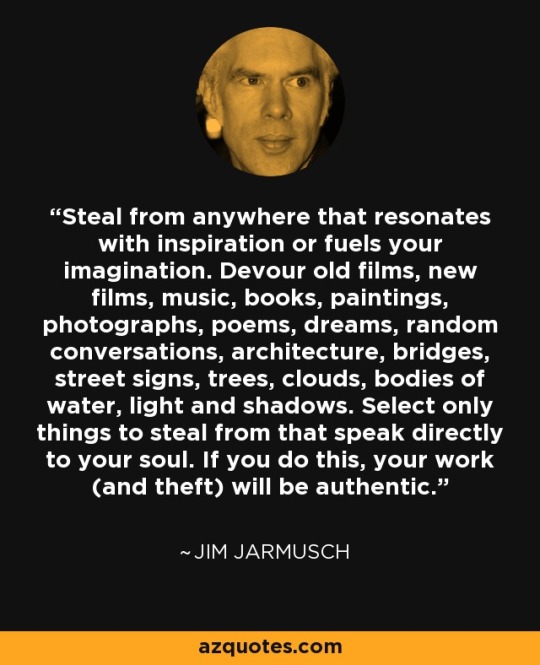
I can’t emphasize enough how freeing this mindset is to someone with perfectionist tendencies like myself, and I think it is the foundation from which I build my creative process from.
Freedom is also incredibly important to me when it comes to my creativity. I am not one who naturally likes to follow rules or guidelines, they tend to add a level of pressure that I have never been comfortable with. Though I realize they are a necessity, I try to avoid them as much as I can.
Constraints and parameters however, I find fascinating. Complete creative freedom can often be overwhelming and paralyzing. Parameters and even time limits, by limiting the pool of creative possibilities, are variables I find that can enhance my creativity and help me generate fresh and unique ideas.
I find tattoo artists to be great examples of this idea. When given vague-to-highly specific parameters by the client, they are often asked to draw and come up with designs with a short window of time. This creative efficiency is certainly an art in itself. I gave my artist a prompt based off the folklore of the will-o'-the-wisp. Within a couple days, she came back with a design that I felt completely captured the essence of a confounding, ghostly light.

Her ability to do so came not only from years of drawing and the muscle memory that comes with that, but having been in situations over and over again where she had to generate new ideas under parameters and time constraints. Creativity has to be then, like so many other things, practice.
I personally relate to the idea of constraints and parameters being a catalyst for creativity when running sound for live shows as well. When I’m mixing the artists I’m always doing so within a relatively brief time frame, and I’m always trying to make them sound clear to themselves and the audience. Within these parameters however I am able to make a surprising amount of creative decisions. Do I want to make them sound brighter, more treble-y, or do I want to emphasize the low end? Should I emphasize the guitars or synths in the mix? Would a little extra reverb on the vocals help accentuate them within the confines of the particular space we’re in? Having all the tools that even a simple mixer provides at my disposal allows me to make these creative decisions within these set parameters and confines.
A final thought would be that I, like so many, find it difficult to sit down and designate a time to be creative. I find that my best ideas come when I am working out, making breakfast, or in the shower. I found it interesting when I read this article by Leo Widrich explaining the science behind that. Essentially the relaxed state of mind these activities encourage transitions the brain into an incubation period. “The subconscious mind has been working extremely hard to solve the problems you face and now that you let your mind wander, it can surface and plant those ideas into your conscious mind.” How freeing is it to know that your mind is always working and coming up with ideas, even when your attention is focused elsewhere?
1 note
·
View note
Text
Brain Essay
Runner’s High
An exciting behavior of mine is running. One of my favorite feelings in the world is the happiness and sense of calm I feel after I’ve just gone for a run. I have overwhelming anxiety and one of the best ways to alleviate some of it is exercise. When I feel super overwhelmed, I know that moving will help the thoughts swirling through my head to process. Running, or really any sense of moving, gives me the feeling of anxiety leaving my body. This feeling is known as runner’s high.
There are several contributors to why I and other runners feel a euphoric, relaxed sense after or during a run. Endorphins, which are released when I run, are neurotransmitters that help the body cope with pain and stress, and they are sometimes referred to as feel-good or happy chemicals. They are natural pain relievers and are similar to morphine. The hypothalamus, located in the endocrine system, makes adjustments and decides when hormones should be released. When the hypothalamus triggers a release of endorphins, it prompts the pituitary gland to release them. They then find the opioid receptors in the brain (Scheve, Tom). Endocannabinoids are substances similar to cannabis that are naturally occuring in the body. Levels of endocannabinoids in the bloodstream increase during exercise. These chemicals bind the body’s cannabinoid receptors, reducing anxiety and pain (Raypole, Crystal).
When I begin running, my brain senses that the body is under stress, due to increased heart rate. To protect against this stress, a protein called BDNF (Brain-Derived Neurotrophic Factor) is released. This protein protects and repairs the brain and improves memory. This is why things feel calmer and clearer after a workout (Widrich, Leo).
David Raichlen conducted a brain imaging study that found significant differences between the brains of runners and non runners. Runners had increased coordinated activity in the front of the brain, which is the part of the brain responsible for memory and executive functions. The research also showed that runners had less activity in the “default mode network” of the brain that is active when a body is idle. This network causes the mind to wander and creates the voice in your head that focuses on the past. Clinical depression is associated with this area in the brain, which is why running has been found to help with depression. Additionally, when the body is under stress, your liver converts the amino acid tryptophan into kynurenine. Accumulation of kynurenine in the brain has been associated with anxiety disorders and stress-induced depression. Running causes the production of kynurenine aminotransferase, which is an enzyme that breaks down kynurenine and therefore clears your bloodstream of this chemical (The Guardian, Guardian News and Media, 21 June 2018).
Raypole, Crystal. “Endocannabinoid System: A Simple Guide to How It Works.” Healthline, Healthline Media, 17 May 2019, www.healthline.com/health/endocannabinoid-system#functions.
Scheve, Tom. “What Are Endorphins?” HowStuffWorks Science, HowStuffWorks, 30 June 2020, science.howstuffworks.com/life/inside-the-mind/emotions/endorphins.htm.
“What Does Running Do to Your Brain?” The Guardian, Guardian News and Media, 21 June 2018, www.theguardian.com/lifeandstyle/the-running-blog/2018/jun/21/what-does-running-do-to-your-brain.
Widrich, Leo. “What Happens to Our Brains When We Exercise and How It Makes Us Happier.” Fast Company, Fast Company, 22 Nov. 2016, www.fastcompany.com/3025957/what-happens-to-our-brains-when-we-exercise-and-how-it-makes-us-happier.
1 note
·
View note
Photo

Here's the formula one tech startup uses to determine all non-negotiable employee salaries By | RICHARD FELONI | http://www.businessinsider.in/ At five-year-old social media company Buffer, the salaries of its 65 global employees - from the person who writes its tweets to its CEO - are posted online for anyone to see. They are determined by a strict formula and aren't open to negotiation. Cofounders Joel Gascoigne, CEO, and Leo Widrich, COO, took this unique approach after deciding early on to make "default to transparency" a top company value. It not only feels natural, Gascoigne told Business Insider, but it helps unite a disparate workforce that lacks a central office. The salary formula gives employees one less thing to worry about and establishes a level of fairness, Gascoigne said. He and Widrich developed the first iteration of the formula alongside Buffer software developer Colin Ross, who has a Ph.D. in computational mathematics, in late 2013. They implemented a new version of the formula last November, which we've broken down below. Read on ........ https://humanengineers.com/wp-content/uploads/2016/02/rsz_1startup-salary-negotiation2-e1358187275907.png https://humanengineers.com/heres-the-formula-one-tech-startup-uses-to-determine-all-non-negotiable-employee-salaries/?feed_id=1727&_unique_id=606a947c40f33 https://humanengineers.com/heres-the-formula-one-tech-startup-uses-to-determine-all-non-negotiable-employee-salaries/?feed_id=1727&_unique_id=606a947c40f33
0 notes
Photo

人間の脳に関するあなたが知るべき7つの事実 https://ift.tt/2GR9qeY 脳は感情・思考・生命維持などの中心的な役割を担う、人間の体においてもっとも重要な器官の1つです。TwitterやFacebookに時間を分散して投稿するサービス「Buffer」の共同設立者のLeo Widrichさんが近年の神経科学で判明した事実の中から、特に実用的なものを7つピックアップしています。
続きを読む...
0 notes
Text
How these 10 Trendsetting Companies use Product Tutorials to Activate Every Single Sign Up
If you’re looking to take your business to the next level and help your products stand out, you can’t afford to ignore the power of product tutorials.
Ever tried to use a product without any instructions? It’s not a fun process, is it?
Product tutorials solve that problem by helping current and future customers understand the value of what you’re selling because they showcase exactly how to use it.
But when a product tutorial is too lengthy, too complicated, or doesn’t look like something your customer needs, they might end up abandoning it all together.
And that’s not a good sales strategy for anyone.
Because the end goal isn’t to get a customer, it’s to keep a customer.
And that means creating a product tutorial that makes it super easy for a new customer to start using—and succeed at using—your product.
So much so that they want to keep on using it. You know, forever.
Here are a few companies that did just that.
1. Buffer keeps it simple
The global average for cart abandonment across desktop, tablet, and mobile devices is a staggering 77.24%.
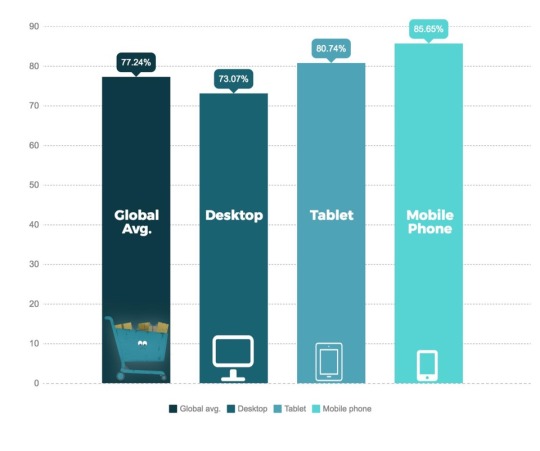
That means there is an extremely likely chance you’ll lose your hard-won customers before they even make it through the onboarding process.
Avoid this classic pitfall by keeping your product tutorial super simple. Just like Buffer.
To get started, you just have to connect your social network accounts.

And compose your first social media post.

Buffer sends a series of onboarding emails to customers to help them navigate their service, starting with this welcome email:

The email cross-promotes the Buffer browser extension and provides a brief breakdown of why it’s useful.
A few days later, the company sends a similar email that explains their Android and iOS app.
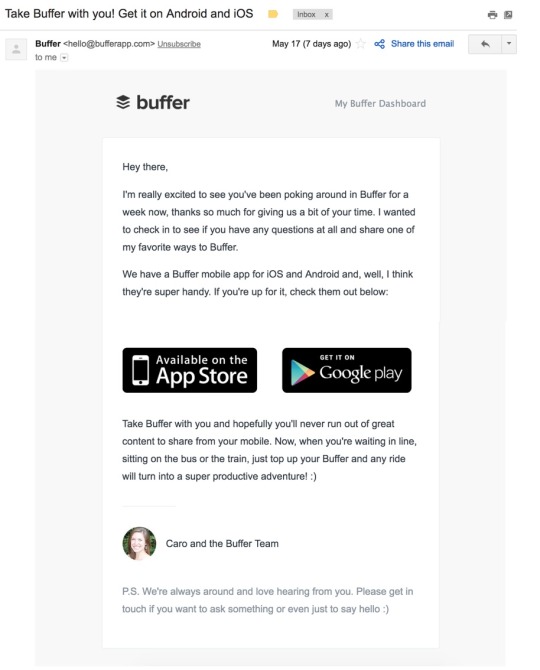
The entire signup process takes less than five minutes and is virtually foolproof. The onboarding email series guides customers along the way without overwhelming them.
The Co-Founder of Buffer, Leo Widrich, explained it best in this Chargify blog post:
“As entrepreneurs we’re often so excited about the possibilities of our product that we feel like we need to show our customers everything the second they sign up for our product.
Instead of doing that, at Buffer we focused on taking a step back and think about what the most successful customers did when they first joined Buffer.”
Try a similar approach with a series of short onboarding emails about your products and services.
Mint breaks their product tutorials down into small tasks to keep things simple, transparent, and easy.
2. Mint breaks it down into smaller tasks
The goal of many online products is to make something that is ordinarily complex, simple.
Mint, a financial services company, allows customers to view all of their banking accounts, credit cards, loans, investment accounts, and properties in one place.
But to see all of this information in one spot, a user first has to sort through all of their accounts, remember usernames and passwords, and upload them to Mint.
As you can imagine, this can be a rather arduous task.
That’s why Mint breaks up a rather lengthy onboarding process into just one task: Add a bank account.
That’s it. Just one bank account.

Once a customer has added an account, they can already see a small picture of their finances.
They already have a taste of success.
It’s so easy—and so gratifying—that it makes them want to do it again. And again.
And the onboarding emails sent by Mint are one of many reasons why the company grew to 1.5 million users in just two years.
Once customers sign up for the service, Mint sends out a welcome email to help users “manage their money” in five short steps.

From there, users receive customized weekly emails summarizing their account activity.

By simplifying a complex process into smaller, more manageable steps, you’ll increase the likelihood that your customer will stick around to complete them.
It doesn’t hurt to have a little fun throughout the process.
3. Canva makes it fun
Virgin America rocked the airline industry when they introduced a safety video people actually wanted to watch.
It was so good that more than 12 million people voluntarily watched it on YouTube—without ever stepping foot on an airplane.
Your product tutorial can be the fun part. Take Canva for example. Their growth process is simple, fun, and proven to work.

Once the customer opens the program, they’re immediately taken through the process of creating their first Canva design.
The customer can pick what they want to use the design platform for.

And what they want to design.
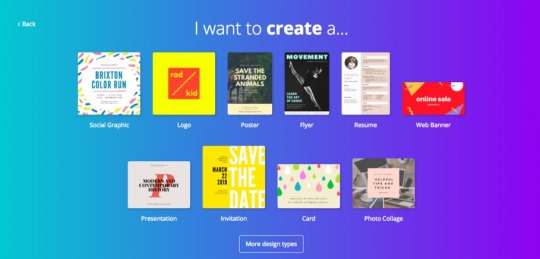
Then Canva uses animation to show them how to create design elements.
As the customer works their way through the design process, they can choose the colors, fonts, graphics, and design elements they want to create just about anything.
The fun, personalized product tutorial resulted in a 10% boost in activation for the company.
Canva’s emails are just as fun. They list which “Canva member number” that each new user is:
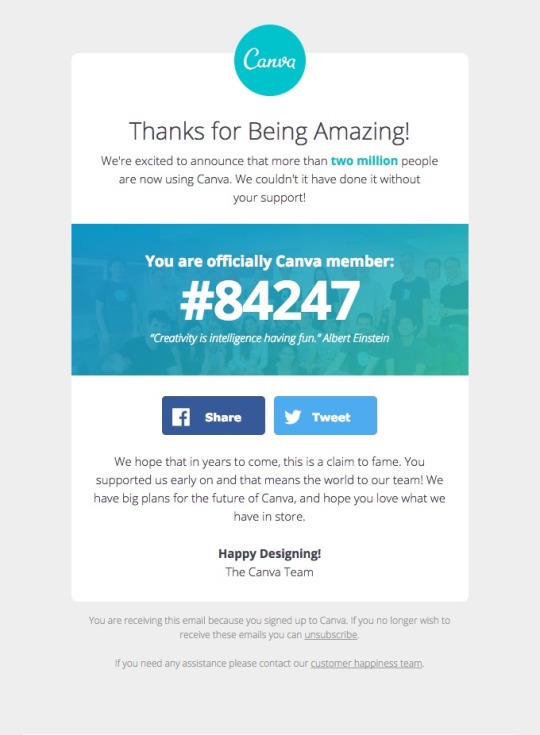
You can find similar success by creating exciting product tutorials and onboarding emails.
4. Evernote gets you to start now
As Ankit Jain puts it, “The key to [product tutorial] success is to get the users hooked during that critical first 3-7 day period.”
That means your customer needs to experience a taste of what your product has to offer as quickly as possible.
That’s exactly what Evernote does.
The note-taking program gives customers an opportunity to stay organized while keeping track of their meeting notes.
To get customers hooked, Evernote wants their customers to write their first notes right away.
So the second the customer signs-up there is a note there waiting for them.

It tells them how to compose their first note and all the fun things they can do with it. Once the customer starts taking notes, they’ll likely be hooked.
In fact, they might eventually have so many notes that they need to pay for a premium Evernote account.
That’s probably why more than 220 million users use Evernote.
Evernote introduces new users to their service with a series of onboarding emails that teach them how to use the service to its full potential.

The series starts with a welcome email that wastes no time at all. There is a “Download Evernote” button right in the email body.

Cut to the chase quicker, just like Evernote, to activate more of your sign-ups.
5. Maven makes it personal
We know that email marketing is much more effective when it’s personalized. So why aren’t our product tutorials personalized as well?
For example, remember when doctors used to make house calls? Yeah me neither.
Despite the fact that house calls were way before my time, I still yearn for that level of personalized care.
I don’t want to look up answers to my health challenges online. That does nothing to reassure me.
And I don’t want to go to an urgent care clinic where no one knows me. They’ll just prescribe me something I don’t need.
Instead, I want to feel heard. I want to feel as though I’m taken care of.
And that’s exactly what Maven Clinic taps into.
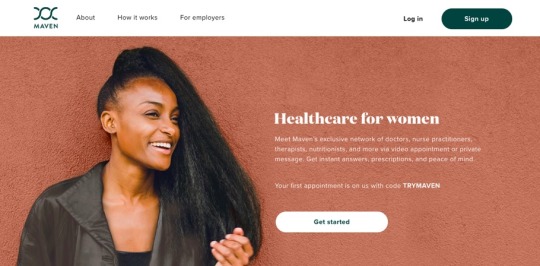
Maven Clinic allows customers to schedule video appointments with doctors, physical therapists, and mental health professionals.
Even though it operates entirely online, it still feels personal, and they reinforce that level of intimacy throughout the entire product tutorial process.
And the company’s emails follow the exact same tone.

Maven’s founder, Kate Ryder, says that this personal touch is what makes the company such a success.
“The responses we get from clients after launching Maven are fantastic — they get great feedback from their employees about how this sends a positive message about supporting a family-friendly culture.”
The second a customer signs-up they receive a welcome note from their own personal wellness coordinator.

The note gives the customer the opportunity to feel welcome, to feel taken care, and to feel as though there is someone available to care for their needs.
This level of personalization is important. Especially in a field as intimate as health care.
Customers want to feel as though they are part of something bigger. They want to feel connected to the world around them.
They don’t want to feel as though they are all alone in the world.
And companies are reaping the benefits. One Maven client offered unlimited maternity leave to employees.
But with the personal features offered by Maven, the longest leave taken was only 7.5 months.
Tap into that emotionality by personalizing your product tutorial.
Customers that feel included are more likely to engage with what you’ve created for them.
6. Asana lets you customize
The point of a product tutorial is not to help you get more customers, it’s to help your customers use—and love—your product.
If your customer goes through your product tutorial only to find that it doesn’t meet their needs, they’re never going to use it again.
But if you use the product tutorial as a way for your customers to customize the experience of your product, that’s a win-win.
Asana, a project management tool, does this brilliantly, which is probably why the company is worth over $600 million.
And because there is an infinite number of reasons a team might need a project management tool, the first thing Asana does is ask the customer to customize it to their needs.

It asks about their teams:

Their first project:

And how they want that project laid out.

From there, the customer can start adding tasks to their projects.
And by the end of the product tutorial, the customer will have a product that is specifically catered to their needs.
Asana’s welcome emails are just as effective. The headline reads: “What do you need to get done today?”
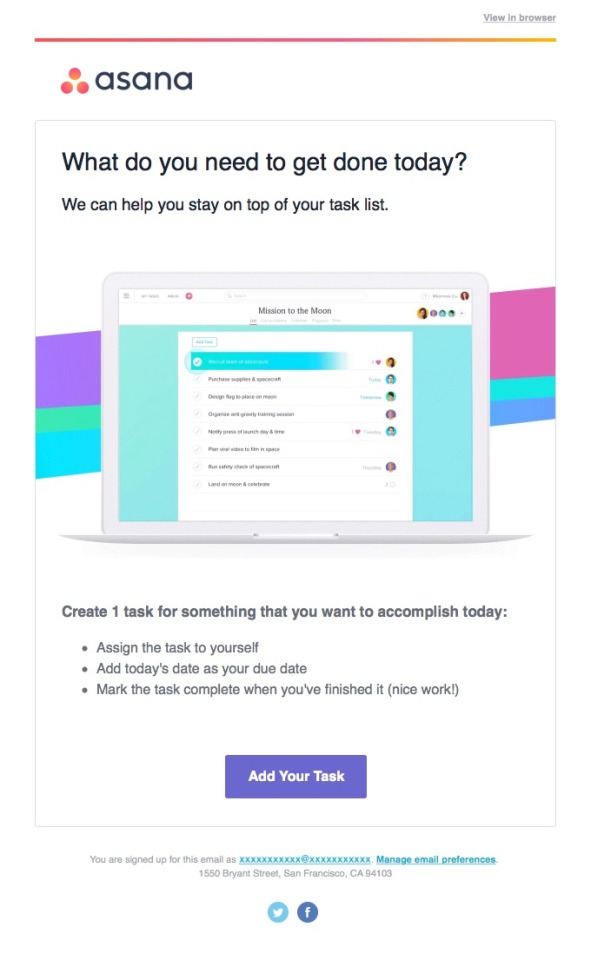
The result is that the customer always gets what they want.
And that’s always a winning strategy.
7. Timely has two fields
How many fields do you really need your customers to fill out?
Historically speaking, analysts have recommended using no more than three form fields on a landing page.
Yet so many onboarding processes ask for way too much information. Do you really need your customer’s first name? Last name? Phone number?
Every field you ask your customer to fill out is another chance they might not stick around to get through it.
This is an era of instant gratification we’re living in.
If you don’t need a field, don’t ask for it.
In the case of time management software Timely, they only ask for two fields.

From there the customer can get right to managing their time.

And if they need more information, there’s an email for that.
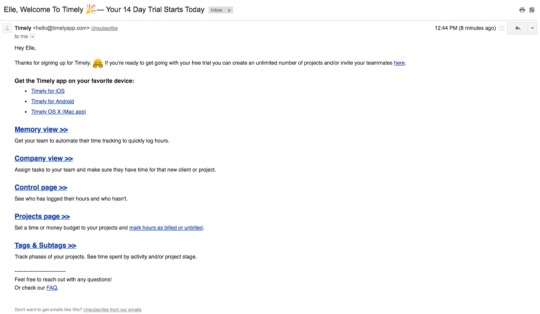
Timely understands what their customers are looking for and they only need two pieces of information to give it to them.
A good product tutorial should do the same. Ask only for what is most vital to getting your customer into your product and engaged with it.
Anything extra is just giving your customer an easy out.
8. Slack gives you the basics
I know. You want to teach your customers all about your product.
After all, you created all of those amazing features and benefits just for them.
But if your product is a little more complicated to use, please don’t try to teach your customer everything they can do with it at once.
Instead, start with just the basics. Give your customer the bare minimum of functionality they need to get started.
Once they’re hooked, you can teach them more. But at the beginning, the last thing you want is for your customer to get overwhelmed and quit.
Take Slack for example. The company has over 5 million daily active users and 1.5 million paid users.

The workplace communication service was designed to roll email, instant messenger, and video chat into one app. And they even do so much more than that.
But they don’t tell you that all at once. Instead, they tell you the three most basic things you can do with their app.
They tell you all about channels:

Messages:

And uploads:

Once you have the basics mastered, Slack tells you how you can learn about the rest when you’re ready:

Slack CEO Stewart Butterfield explained this tactic in an interview:
He said, “It’s less (about) features that are ahead of where the users are and trying to understand” [the need of the customers].
Slack’s onboarding emails keep it basic, too. Their welcome emails are sleek, simple, and get to the point right away.

By keeping to the basics, Slack users can get right to work reading through their channels, sending messages to their co-workers, and uploading important documents.
Once they see the value of your product, they’ll come back for more.
Until then, give them the bare minimum they need to succeed.
9. MailChimp hides their advanced functionality
Most businesses don’t start out with 100,000 customers. In fact, most businesses start out with just one.
Over time they grow and scale and require a lot more functionality than they used to.
But at the beginning, they don’t need all that functionality.
More likely than not, they need only the most basic functionality.
MailChimp gets that. The email platform has every bell and whistle you could possibly imagine.
That’s probably why the company made more than $400 million in 2016 and grew their user base from 12 million to six million in just one year.
They have A/B testing, integration with Salesforce, newsletter sign-up forms, and complex analytics.
But when you’re just starting out, you don’t need any of that.
In fact, when you’re just starting out, all you need is to be able to email your customers.
That’s where Tiny Letter comes in.

Tiny Letter is MailChimp’s lite program. All you do is sign-up, upload your existing customers, and send them an email.
That’s all there is to it.

There’s no analytics. There’s no A/B testing. There are no embedded forms. There are no design elements.
It’s just a simple way for your business to send an email to everyone you want to send an email to.
You can keep using Tiny Letter until you have 5,000 subscribers. But by then you’ll probably want to add a bell or whistle or two.
That’s when MailChimp pulls back the curtain and lets you see all of your deepest desires.
But not a moment before you’re ready to see them.
MailChimp emails are designed to serve the exact same purpose.

Online training, a knowledge base, marketing guides, and a blog are listed to help users become acquainted with the service before diving in deeper toward advanced features.
10. Expensify makes it easy
In some cases, it’s relatively easy for a customer to want your product and even to sign-up for it, but then they struggle to roll it out for their employees.
The product tutorial is the perfect opportunity for you to address those concerns.
Take Expensify, who doubled their customer base in six months, for example.
Expensify lets employees submit their expense reports and get reimbursed for them.
But getting employees to start using the program means making it as easy as pie.

Expensify simply asks who it should submit receipts to.

And when they should be submitted each week.

That’s it! The employee can immediately start uploading pictures of their receipts.

And Expensify will do all the rest.

The brand doesn’t even require users to create a password at first. Instead, users can create a password once they receive a welcome email. The entire sign up process is practically infallible.

The easier it is for companies to roll your product out to their employees, the more likely they are to bridge the gap from purchaser to loyal customer. Mind the gap. Make it easy.
Conclusion
You should be thinking about your customer and what they need from your product. Period.
Find ways to make your product tutorial simple and engaging. Give your customers what they came for. And fast.
Your product tutorial should be so easy and intuitive that anyone can get started. Even your grandmother.
Encourage your customers to take (at least one) action right away, like sending an email.
They’ll be able to see what your product can do. And whether or not they prefer your product to another one.
Keep tutorials simple like Buffer or break things down into actionable, smaller steps like Mint.
Spice tutorials up and make them fun like Canva or make users get started right away like Evernote.
Be personable like Maven or let users customize their experience like Asana.
Timely only has two required fields, which could help you keep onboard customers more effectively. Slack only gives users the basics, which keeps them from becoming overwhelmed.
MailChimp hides advanced features until users are much more experienced, while Expensify makes it easy to sign up for their service right away.
As a result, users of these services can get hooked on using these products and services monthly, weekly, or daily.
That’s what a successful product tutorial should do. It shouldn’t turn your subscribers into churners. It should turn your subscribers into users.
How have you used product tutorials to activate your sign-ups?
About the Author: Neil Patel is the cofounder of Neil Patel Digital.
from The Kissmetrics Marketing Blog https://ift.tt/2FaJZzV via https://ift.tt/1oIgpXs
0 notes
Text
How these 10 Trendsetting Companies use Product Tutorials to Activate Every Single Sign Up
If you’re looking to take your business to the next level and help your products stand out, you can’t afford to ignore the power of product tutorials.
Ever tried to use a product without any instructions? It’s not a fun process, is it?
Product tutorials solve that problem by helping current and future customers understand the value of what you’re selling because they showcase exactly how to use it.
But when a product tutorial is too lengthy, too complicated, or doesn’t look like something your customer needs, they might end up abandoning it all together.
And that’s not a good sales strategy for anyone.
Because the end goal isn’t to get a customer, it’s to keep a customer.
And that means creating a product tutorial that makes it super easy for a new customer to start using—and succeed at using—your product.
So much so that they want to keep on using it. You know, forever.
Here are a few companies that did just that.
1. Buffer keeps it simple
The global average for cart abandonment across desktop, tablet, and mobile devices is a staggering 77.24%.
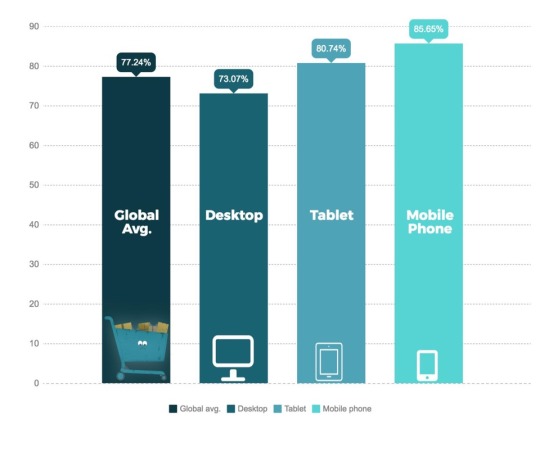
That means there is an extremely likely chance you’ll lose your hard-won customers before they even make it through the onboarding process.
Avoid this classic pitfall by keeping your product tutorial super simple. Just like Buffer.
To get started, you just have to connect your social network accounts.

And compose your first social media post.

Buffer sends a series of onboarding emails to customers to help them navigate their service, starting with this welcome email:

The email cross-promotes the Buffer browser extension and provides a brief breakdown of why it’s useful.
A few days later, the company sends a similar email that explains their Android and iOS app.
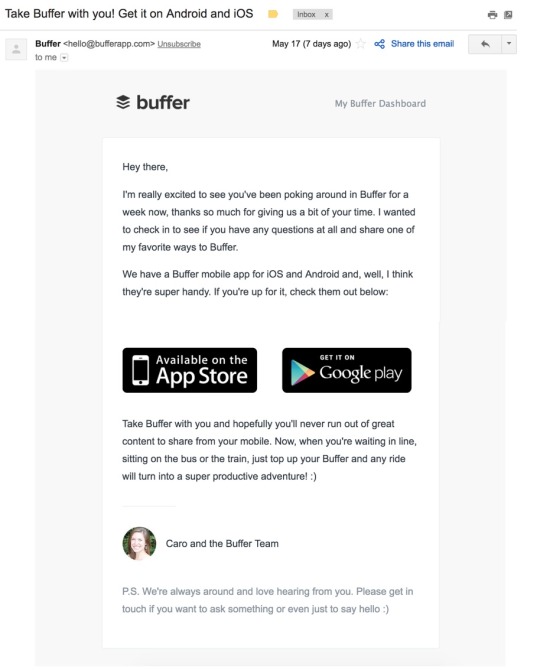
The entire signup process takes less than five minutes and is virtually foolproof. The onboarding email series guides customers along the way without overwhelming them.
The Co-Founder of Buffer, Leo Widrich, explained it best in this Chargify blog post:
“As entrepreneurs we’re often so excited about the possibilities of our product that we feel like we need to show our customers everything the second they sign up for our product.
Instead of doing that, at Buffer we focused on taking a step back and think about what the most successful customers did when they first joined Buffer.”
Try a similar approach with a series of short onboarding emails about your products and services.
Mint breaks their product tutorials down into small tasks to keep things simple, transparent, and easy.
2. Mint breaks it down into smaller tasks
The goal of many online products is to make something that is ordinarily complex, simple.
Mint, a financial services company, allows customers to view all of their banking accounts, credit cards, loans, investment accounts, and properties in one place.
But to see all of this information in one spot, a user first has to sort through all of their accounts, remember usernames and passwords, and upload them to Mint.
As you can imagine, this can be a rather arduous task.
That’s why Mint breaks up a rather lengthy onboarding process into just one task: Add a bank account.
That’s it. Just one bank account.

Once a customer has added an account, they can already see a small picture of their finances.
They already have a taste of success.
It’s so easy—and so gratifying—that it makes them want to do it again. And again.
And the onboarding emails sent by Mint are one of many reasons why the company grew to 1.5 million users in just two years.
Once customers sign up for the service, Mint sends out a welcome email to help users “manage their money” in five short steps.

From there, users receive customized weekly emails summarizing their account activity.

By simplifying a complex process into smaller, more manageable steps, you’ll increase the likelihood that your customer will stick around to complete them.
It doesn’t hurt to have a little fun throughout the process.
3. Canva makes it fun
Virgin America rocked the airline industry when they introduced a safety video people actually wanted to watch.
It was so good that more than 12 million people voluntarily watched it on YouTube—without ever stepping foot on an airplane.
Your product tutorial can be the fun part. Take Canva for example. Their growth process is simple, fun, and proven to work.

Once the customer opens the program, they’re immediately taken through the process of creating their first Canva design.
The customer can pick what they want to use the design platform for.

And what they want to design.
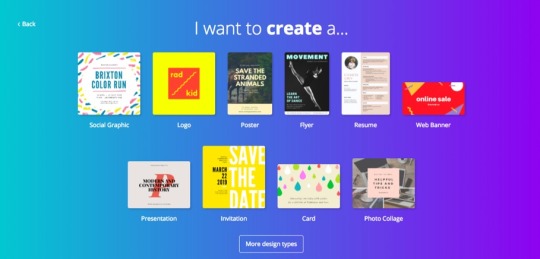
Then Canva uses animation to show them how to create design elements.
As the customer works their way through the design process, they can choose the colors, fonts, graphics, and design elements they want to create just about anything.
The fun, personalized product tutorial resulted in a 10% boost in activation for the company.
Canva’s emails are just as fun. They list which “Canva member number” that each new user is:
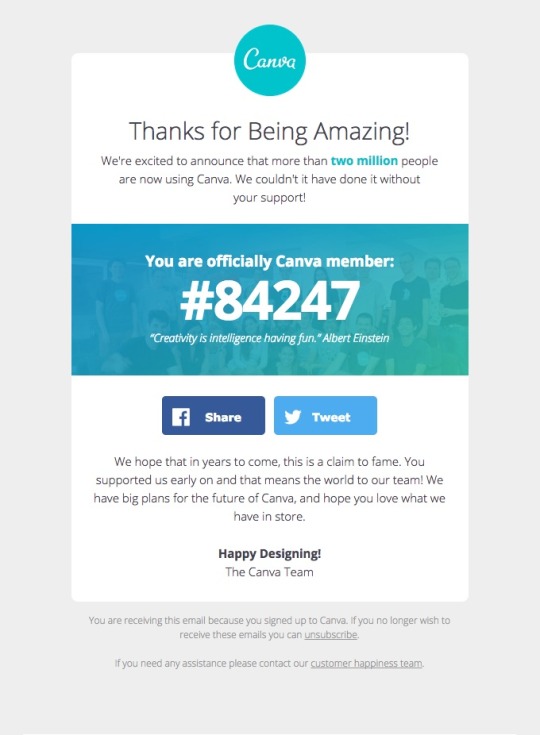
You can find similar success by creating exciting product tutorials and onboarding emails.
4. Evernote gets you to start now
As Ankit Jain puts it, “The key to [product tutorial] success is to get the users hooked during that critical first 3-7 day period.”
That means your customer needs to experience a taste of what your product has to offer as quickly as possible.
That’s exactly what Evernote does.
The note-taking program gives customers an opportunity to stay organized while keeping track of their meeting notes.
To get customers hooked, Evernote wants their customers to write their first notes right away.
So the second the customer signs-up there is a note there waiting for them.

It tells them how to compose their first note and all the fun things they can do with it. Once the customer starts taking notes, they’ll likely be hooked.
In fact, they might eventually have so many notes that they need to pay for a premium Evernote account.
That’s probably why more than 220 million users use Evernote.
Evernote introduces new users to their service with a series of onboarding emails that teach them how to use the service to its full potential.

The series starts with a welcome email that wastes no time at all. There is a “Download Evernote” button right in the email body.

Cut to the chase quicker, just like Evernote, to activate more of your sign-ups.
5. Maven makes it personal
We know that email marketing is much more effective when it’s personalized. So why aren’t our product tutorials personalized as well?
For example, remember when doctors used to make house calls? Yeah me neither.
Despite the fact that house calls were way before my time, I still yearn for that level of personalized care.
I don’t want to look up answers to my health challenges online. That does nothing to reassure me.
And I don’t want to go to an urgent care clinic where no one knows me. They’ll just prescribe me something I don’t need.
Instead, I want to feel heard. I want to feel as though I’m taken care of.
And that’s exactly what Maven Clinic taps into.
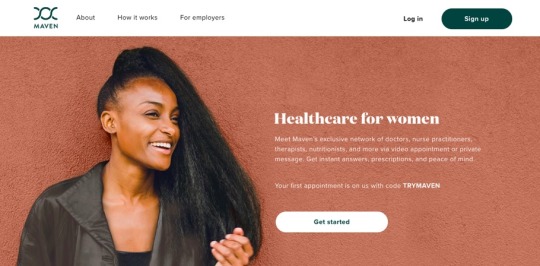
Maven Clinic allows customers to schedule video appointments with doctors, physical therapists, and mental health professionals.
Even though it operates entirely online, it still feels personal, and they reinforce that level of intimacy throughout the entire product tutorial process.
And the company’s emails follow the exact same tone.

Maven’s founder, Kate Ryder, says that this personal touch is what makes the company such a success.
“The responses we get from clients after launching Maven are fantastic — they get great feedback from their employees about how this sends a positive message about supporting a family-friendly culture.”
The second a customer signs-up they receive a welcome note from their own personal wellness coordinator.

0 notes
Text
How these 10 Trendsetting Companies use Product Tutorials to Activate Every Single Sign Up
If you’re looking to take your business to the next level and help your products stand out, you can’t afford to ignore the power of product tutorials.
Ever tried to use a product without any instructions? It’s not a fun process, is it?
Product tutorials solve that problem by helping current and future customers understand the value of what you’re selling because they showcase exactly how to use it.
But when a product tutorial is too lengthy, too complicated, or doesn’t look like something your customer needs, they might end up abandoning it all together.
And that’s not a good sales strategy for anyone.
Because the end goal isn’t to get a customer, it’s to keep a customer.
And that means creating a product tutorial that makes it super easy for a new customer to start using—and succeed at using—your product.
So much so that they want to keep on using it. You know, forever.
Here are a few companies that did just that.
1. Buffer keeps it simple
The global average for cart abandonment across desktop, tablet, and mobile devices is a staggering 77.24%.
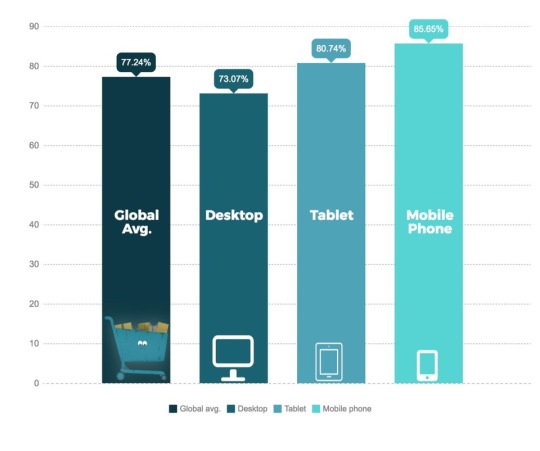
That means there is an extremely likely chance you’ll lose your hard-won customers before they even make it through the onboarding process.
Avoid this classic pitfall by keeping your product tutorial super simple. Just like Buffer.
To get started, you just have to connect your social network accounts.

And compose your first social media post.

Buffer sends a series of onboarding emails to customers to help them navigate their service, starting with this welcome email:

The email cross-promotes the Buffer browser extension and provides a brief breakdown of why it’s useful.
A few days later, the company sends a similar email that explains their Android and iOS app.
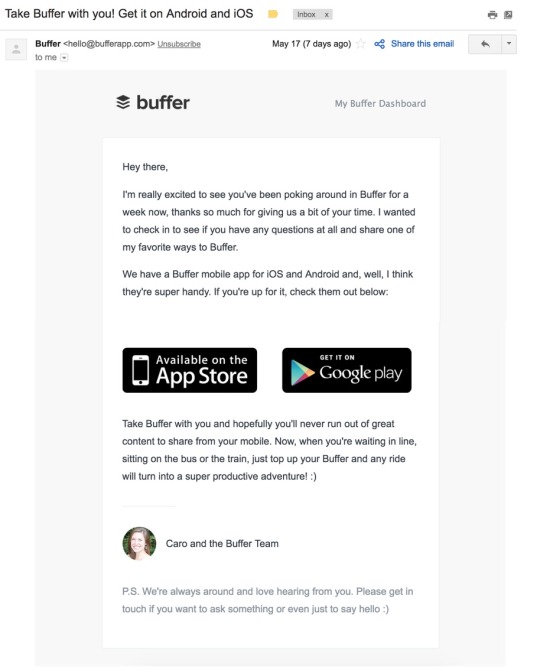
The entire signup process takes less than five minutes and is virtually foolproof. The onboarding email series guides customers along the way without overwhelming them.
The Co-Founder of Buffer, Leo Widrich, explained it best in this Chargify blog post:
“As entrepreneurs we’re often so excited about the possibilities of our product that we feel like we need to show our customers everything the second they sign up for our product.
Instead of doing that, at Buffer we focused on taking a step back and think about what the most successful customers did when they first joined Buffer.”
Try a similar approach with a series of short onboarding emails about your products and services.
Mint breaks their product tutorials down into small tasks to keep things simple, transparent, and easy.
2. Mint breaks it down into smaller tasks
The goal of many online products is to make something that is ordinarily complex, simple.
Mint, a financial services company, allows customers to view all of their banking accounts, credit cards, loans, investment accounts, and properties in one place.
But to see all of this information in one spot, a user first has to sort through all of their accounts, remember usernames and passwords, and upload them to Mint.
As you can imagine, this can be a rather arduous task.
That’s why Mint breaks up a rather lengthy onboarding process into just one task: Add a bank account.
That’s it. Just one bank account.

Once a customer has added an account, they can already see a small picture of their finances.
They already have a taste of success.
It’s so easy—and so gratifying—that it makes them want to do it again. And again.
And the onboarding emails sent by Mint are one of many reasons why the company grew to 1.5 million users in just two years.
Once customers sign up for the service, Mint sends out a welcome email to help users “manage their money” in five short steps.

From there, users receive customized weekly emails summarizing their account activity.

By simplifying a complex process into smaller, more manageable steps, you’ll increase the likelihood that your customer will stick around to complete them.
It doesn’t hurt to have a little fun throughout the process.
3. Canva makes it fun
Virgin America rocked the airline industry when they introduced a safety video people actually wanted to watch.
It was so good that more than 12 million people voluntarily watched it on YouTube—without ever stepping foot on an airplane.
Your product tutorial can be the fun part. Take Canva for example. Their growth process is simple, fun, and proven to work.

Once the customer opens the program, they’re immediately taken through the process of creating their first Canva design.
The customer can pick what they want to use the design platform for.

And what they want to design.
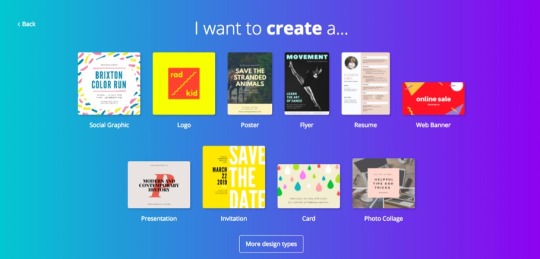
Then Canva uses animation to show them how to create design elements.
As the customer works their way through the design process, they can choose the colors, fonts, graphics, and design elements they want to create just about anything.
The fun, personalized product tutorial resulted in a 10% boost in activation for the company.
Canva’s emails are just as fun. They list which “Canva member number” that each new user is:
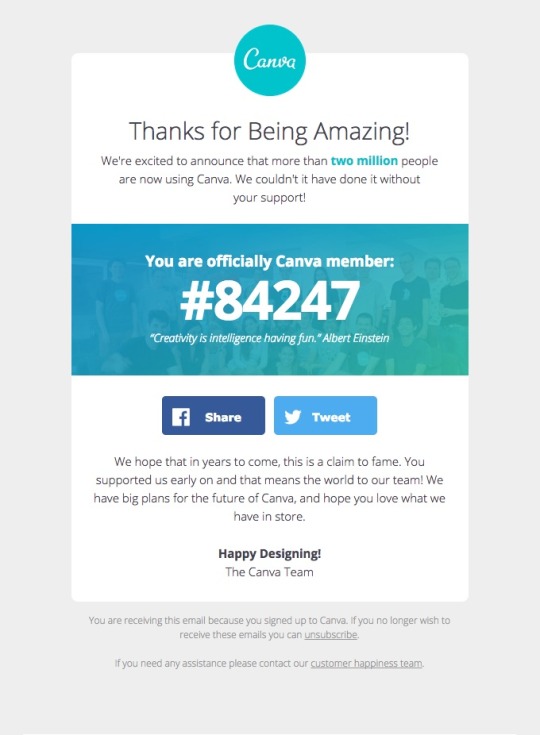
You can find similar success by creating exciting product tutorials and onboarding emails.
4. Evernote gets you to start now
As Ankit Jain puts it, “The key to [product tutorial] success is to get the users hooked during that critical first 3-7 day period.”
That means your customer needs to experience a taste of what your product has to offer as quickly as possible.
That’s exactly what Evernote does.
The note-taking program gives customers an opportunity to stay organized while keeping track of their meeting notes.
To get customers hooked, Evernote wants their customers to write their first notes right away.
So the second the customer signs-up there is a note there waiting for them.

It tells them how to compose their first note and all the fun things they can do with it. Once the customer starts taking notes, they’ll likely be hooked.
In fact, they might eventually have so many notes that they need to pay for a premium Evernote account.
That’s probably why more than 220 million users use Evernote.
Evernote introduces new users to their service with a series of onboarding emails that teach them how to use the service to its full potential.

The series starts with a welcome email that wastes no time at all. There is a “Download Evernote” button right in the email body.

Cut to the chase quicker, just like Evernote, to activate more of your sign-ups.
5. Maven makes it personal
We know that email marketing is much more effective when it’s personalized. So why aren’t our product tutorials personalized as well?
For example, remember when doctors used to make house calls? Yeah me neither.
Despite the fact that house calls were way before my time, I still yearn for that level of personalized care.
I don’t want to look up answers to my health challenges online. That does nothing to reassure me.
And I don’t want to go to an urgent care clinic where no one knows me. They’ll just prescribe me something I don’t need.
Instead, I want to feel heard. I want to feel as though I’m taken care of.
And that’s exactly what Maven Clinic taps into.
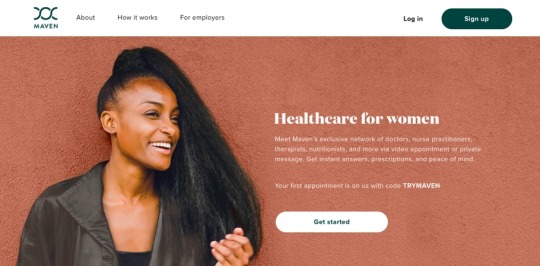
Maven Clinic allows customers to schedule video appointments with doctors, physical therapists, and mental health professionals.
Even though it operates entirely online, it still feels personal, and they reinforce that level of intimacy throughout the entire product tutorial process.
And the company’s emails follow the exact same tone.

Maven’s founder, Kate Ryder, says that this personal touch is what makes the company such a success.
“The responses we get from clients after launching Maven are fantastic — they get great feedback from their employees about how this sends a positive message about supporting a family-friendly culture.”
The second a customer signs-up they receive a welcome note from their own personal wellness coordinator.

The note gives the customer the opportunity to feel welcome, to feel taken care, and to feel as though there is someone available to care for their needs.
This level of personalization is important. Especially in a field as intimate as health care.
Customers want to feel as though they are part of something bigger. They want to feel connected to the world around them.
They don’t want to feel as though they are all alone in the world.
And companies are reaping the benefits. One Maven client offered unlimited maternity leave to employees.
But with the personal features offered by Maven, the longest leave taken was only 7.5 months.
Tap into that emotionality by personalizing your product tutorial.
Customers that feel included are more likely to engage with what you’ve created for them.
6. Asana lets you customize
The point of a product tutorial is not to help you get more customers, it’s to help your customers use—and love—your product.
If your customer goes through your product tutorial only to find that it doesn’t meet their needs, they’re never going to use it again.
But if you use the product tutorial as a way for your customers to customize the experience of your product, that’s a win-win.
Asana, a project management tool, does this brilliantly, which is probably why the company is worth over $600 million.
And because there is an infinite number of reasons a team might need a project management tool, the first thing Asana does is ask the customer to customize it to their needs.

It asks about their teams:

Their first project:

And how they want that project laid out.

From there, the customer can start adding tasks to their projects.
And by the end of the product tutorial, the customer will have a product that is specifically catered to their needs.
Asana’s welcome emails are just as effective. The headline reads: “What do you need to get done today?”
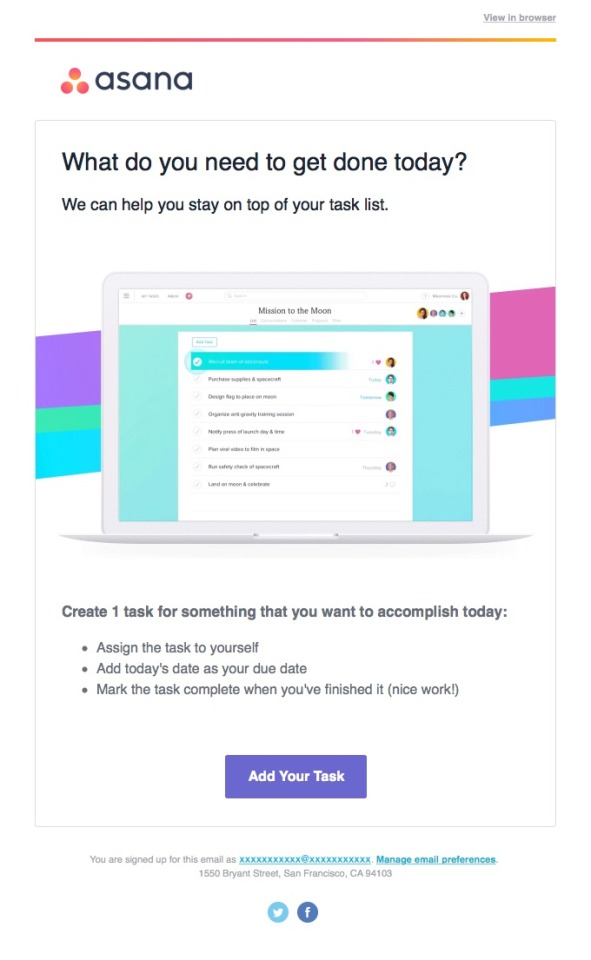
The result is that the customer always gets what they want.
And that’s always a winning strategy.
7. Timely has two fields
How many fields do you really need your customers to fill out?
Historically speaking, analysts have recommended using no more than three form fields on a landing page.
Yet so many onboarding processes ask for way too much information. Do you really need your customer’s first name? Last name? Phone number?
Every field you ask your customer to fill out is another chance they might not stick around to get through it.
This is an era of instant gratification we’re living in.
If you don’t need a field, don’t ask for it.
In the case of time management software Timely, they only ask for two fields.

From there the customer can get right to managing their time.

And if they need more information, there’s an email for that.
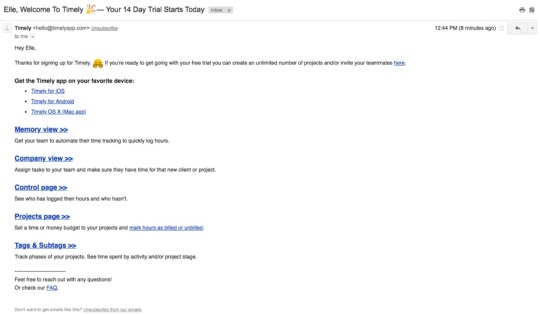
Timely understands what their customers are looking for and they only need two pieces of information to give it to them.
A good product tutorial should do the same. Ask only for what is most vital to getting your customer into your product and engaged with it.
Anything extra is just giving your customer an easy out.
8. Slack gives you the basics
I know. You want to teach your customers all about your product.
After all, you created all of those amazing features and benefits just for them.
But if your product is a little more complicated to use, please don’t try to teach your customer everything they can do with it at once.
Instead, start with just the basics. Give your customer the bare minimum of functionality they need to get started.
Once they’re hooked, you can teach them more. But at the beginning, the last thing you want is for your customer to get overwhelmed and quit.
Take Slack for example. The company has over 5 million daily active users and 1.5 million paid users.

The workplace communication service was designed to roll email, instant messenger, and video chat into one app. And they even do so much more than that.
But they don’t tell you that all at once. Instead, they tell you the three most basic things you can do with their app.
They tell you all about channels:

Messages:

And uploads:

Once you have the basics mastered, Slack tells you how you can learn about the rest when you’re ready:

Slack CEO Stewart Butterfield explained this tactic in an interview:
He said, “It’s less (about) features that are ahead of where the users are and trying to understand” [the need of the customers].
Slack’s onboarding emails keep it basic, too. Their welcome emails are sleek, simple, and get to the point right away.

By keeping to the basics, Slack users can get right to work reading through their channels, sending messages to their co-workers, and uploading important documents.
Once they see the value of your product, they’ll come back for more.
Until then, give them the bare minimum they need to succeed.
9. MailChimp hides their advanced functionality
Most businesses don’t start out with 100,000 customers. In fact, most businesses start out with just one.
Over time they grow and scale and require a lot more functionality than they used to.
But at the beginning, they don’t need all that functionality.
More likely than not, they need only the most basic functionality.
MailChimp gets that. The email platform has every bell and whistle you could possibly imagine.
That’s probably why the company made more than $400 million in 2016 and grew their user base from 12 million to six million in just one year.
They have A/B testing, integration with Salesforce, newsletter sign-up forms, and complex analytics.
But when you’re just starting out, you don’t need any of that.
In fact, when you’re just starting out, all you need is to be able to email your customers.
That’s where Tiny Letter comes in.

Tiny Letter is MailChimp’s lite program. All you do is sign-up, upload your existing customers, and send them an email.
That’s all there is to it.

There’s no analytics. There’s no A/B testing. There are no embedded forms. There are no design elements.
It’s just a simple way for your business to send an email to everyone you want to send an email to.
You can keep using Tiny Letter until you have 5,000 subscribers. But by then you’ll probably want to add a bell or whistle or two.
That’s when MailChimp pulls back the curtain and lets you see all of your deepest desires.
But not a moment before you’re ready to see them.
MailChimp emails are designed to serve the exact same purpose.

Online training, a knowledge base, marketing guides, and a blog are listed to help users become acquainted with the service before diving in deeper toward advanced features.
10. Expensify makes it easy
In some cases, it’s relatively easy for a customer to want your product and even to sign-up for it, but then they struggle to roll it out for their employees.
The product tutorial is the perfect opportunity for you to address those concerns.
Take Expensify, who doubled their customer base in six months, for example.
Expensify lets employees submit their expense reports and get reimbursed for them.
But getting employees to start using the program means making it as easy as pie.

Expensify simply asks who it should submit receipts to.

And when they should be submitted each week.

That’s it! The employee can immediately start uploading pictures of their receipts.

And Expensify will do all the rest.

The brand doesn’t even require users to create a password at first. Instead, users can create a password once they receive a welcome email. The entire sign up process is practically infallible.

The easier it is for companies to roll your product out to their employees, the more likely they are to bridge the gap from purchaser to loyal customer. Mind the gap. Make it easy.
Conclusion
You should be thinking about your customer and what they need from your product. Period.
Find ways to make your product tutorial simple and engaging. Give your customers what they came for. And fast.
Your product tutorial should be so easy and intuitive that anyone can get started. Even your grandmother.
Encourage your customers to take (at least one) action right away, like sending an email.
They’ll be able to see what your product can do. And whether or not they prefer your product to another one.
Keep tutorials simple like Buffer or break things down into actionable, smaller steps like Mint.
Spice tutorials up and make them fun like Canva or make users get started right away like Evernote.
Be personable like Maven or let users customize their experience like Asana.
Timely only has two required fields, which could help you keep onboard customers more effectively. Slack only gives users the basics, which keeps them from becoming overwhelmed.
MailChimp hides advanced features until users are much more experienced, while Expensify makes it easy to sign up for their service right away.
As a result, users of these services can get hooked on using these products and services monthly, weekly, or daily.
That’s what a successful product tutorial should do. It shouldn’t turn your subscribers into churners. It should turn your subscribers into users.
How have you used product tutorials to activate your sign-ups?
About the Author: Neil Patel is the cofounder of Neil Patel Digital.
from Online Marketing Tips https://blog.kissmetrics.com/product-tutorials-to-activate-signups/
0 notes
Text
How these 10 Trendsetting Companies use Product Tutorials to Activate Every Single Sign Up
If you’re looking to take your business to the next level and help your products stand out, you can’t afford to ignore the power of product tutorials.
Ever tried to use a product without any instructions? It’s not a fun process, is it?
Product tutorials solve that problem by helping current and future customers understand the value of what you’re selling because they showcase exactly how to use it.
But when a product tutorial is too lengthy, too complicated, or doesn’t look like something your customer needs, they might end up abandoning it all together.
And that’s not a good sales strategy for anyone.
Because the end goal isn’t to get a customer, it’s to keep a customer.
And that means creating a product tutorial that makes it super easy for a new customer to start using—and succeed at using—your product.
So much so that they want to keep on using it. You know, forever.
Here are a few companies that did just that.
1. Buffer keeps it simple
The global average for cart abandonment across desktop, tablet, and mobile devices is a staggering 77.24%.
That means there is an extremely likely chance you’ll lose your hard-won customers before they even make it through the onboarding process.
Avoid this classic pitfall by keeping your product tutorial super simple. Just like Buffer.
To get started, you just have to connect your social network accounts.
And compose your first social media post.
Buffer sends a series of onboarding emails to customers to help them navigate their service, starting with this welcome email:
The email cross-promotes the Buffer browser extension and provides a brief breakdown of why it’s useful.
A few days later, the company sends a similar email that explains their Android and iOS app.
The entire signup process takes less than five minutes and is virtually foolproof. The onboarding email series guides customers along the way without overwhelming them.
The Co-Founder of Buffer, Leo Widrich, explained it best in this Chargify blog post:
“As entrepreneurs we’re often so excited about the possibilities of our product that we feel like we need to show our customers everything the second they sign up for our product.
Instead of doing that, at Buffer we focused on taking a step back and think about what the most successful customers did when they first joined Buffer.”
Try a similar approach with a series of short onboarding emails about your products and services.
Mint breaks their product tutorials down into small tasks to keep things simple, transparent, and easy.
2. Mint breaks it down into smaller tasks
The goal of many online products is to make something that is ordinarily complex, simple.
Mint, a financial services company, allows customers to view all of their banking accounts, credit cards, loans, investment accounts, and properties in one place.
But to see all of this information in one spot, a user first has to sort through all of their accounts, remember usernames and passwords, and upload them to Mint.
As you can imagine, this can be a rather arduous task.
That’s why Mint breaks up a rather lengthy onboarding process into just one task: Add a bank account.
That’s it. Just one bank account.
Once a customer has added an account, they can already see a small picture of their finances.
They already have a taste of success.
It’s so easy—and so gratifying—that it makes them want to do it again. And again.
And the onboarding emails sent by Mint are one of many reasons why the company grew to 1.5 million users in just two years.
Once customers sign up for the service, Mint sends out a welcome email to help users “manage their money” in five short steps.
From there, users receive customized weekly emails summarizing their account activity.
By simplifying a complex process into smaller, more manageable steps, you’ll increase the likelihood that your customer will stick around to complete them.
It doesn’t hurt to have a little fun throughout the process.
3. Canva makes it fun
Virgin America rocked the airline industry when they introduced a safety video people actually wanted to watch.
youtube
It was so good that more than 12 million people voluntarily watched it on YouTube—without ever stepping foot on an airplane.
Your product tutorial can be the fun part. Take Canva for example. Their growth process is simple, fun, and proven to work.
Once the customer opens the program, they’re immediately taken through the process of creating their first Canva design.
The customer can pick what they want to use the design platform for.
And what they want to design.
Then Canva uses animation to show them how to create design elements.
youtube
As the customer works their way through the design process, they can choose the colors, fonts, graphics, and design elements they want to create just about anything.
The fun, personalized product tutorial resulted in a 10% boost in activation for the company.
Canva’s emails are just as fun. They list which “Canva member number” that each new user is:
You can find similar success by creating exciting product tutorials and onboarding emails.
4. Evernote gets you to start now
As Ankit Jain puts it, “The key to [product tutorial] success is to get the users hooked during that critical first 3-7 day period.”
That means your customer needs to experience a taste of what your product has to offer as quickly as possible.
That’s exactly what Evernote does.
The note-taking program gives customers an opportunity to stay organized while keeping track of their meeting notes.
To get customers hooked, Evernote wants their customers to write their first notes right away.
So the second the customer signs-up there is a note there waiting for them.
It tells them how to compose their first note and all the fun things they can do with it. Once the customer starts taking notes, they’ll likely be hooked.
In fact, they might eventually have so many notes that they need to pay for a premium Evernote account.
That’s probably why more than 220 million users use Evernote.
Evernote introduces new users to their service with a series of onboarding emails that teach them how to use the service to its full potential.
The series starts with a welcome email that wastes no time at all. There is a “Download Evernote” button right in the email body.
Cut to the chase quicker, just like Evernote, to activate more of your sign-ups.
5. Maven makes it personal
We know that email marketing is much more effective when it’s personalized. So why aren’t our product tutorials personalized as well?
For example, remember when doctors used to make house calls? Yeah me neither.
Despite the fact that house calls were way before my time, I still yearn for that level of personalized care.
I don’t want to look up answers to my health challenges online. That does nothing to reassure me.
And I don’t want to go to an urgent care clinic where no one knows me. They’ll just prescribe me something I don’t need.
Instead, I want to feel heard. I want to feel as though I’m taken care of.
And that’s exactly what Maven Clinic taps into.
Maven Clinic allows customers to schedule video appointments with doctors, physical therapists, and mental health professionals.
Even though it operates entirely online, it still feels personal, and they reinforce that level of intimacy throughout the entire product tutorial process.
And the company’s emails follow the exact same tone.
Maven’s founder, Kate Ryder, says that this personal touch is what makes the company such a success.
“The responses we get from clients after launching Maven are fantastic — they get great feedback from their employees about how this sends a positive message about supporting a family-friendly culture.”
The second a customer signs-up they receive a welcome note from their own personal wellness coordinator.
The note gives the customer the opportunity to feel welcome, to feel taken care, and to feel as though there is someone available to care for their needs.
This level of personalization is important. Especially in a field as intimate as health care.
Customers want to feel as though they are part of something bigger. They want to feel connected to the world around them.
They don’t want to feel as though they are all alone in the world.
And companies are reaping the benefits. One Maven client offered unlimited maternity leave to employees.
But with the personal features offered by Maven, the longest leave taken was only 7.5 months.
Tap into that emotionality by personalizing your product tutorial.
Customers that feel included are more likely to engage with what you’ve created for them.
6. Asana lets you customize
The point of a product tutorial is not to help you get more customers, it’s to help your customers use—and love—your product.
If your customer goes through your product tutorial only to find that it doesn’t meet their needs, they’re never going to use it again.
But if you use the product tutorial as a way for your customers to customize the experience of your product, that’s a win-win.
Asana, a project management tool, does this brilliantly, which is probably why the company is worth over $600 million.
And because there is an infinite number of reasons a team might need a project management tool, the first thing Asana does is ask the customer to customize it to their needs.
It asks about their teams:
Their first project:
And how they want that project laid out.
From there, the customer can start adding tasks to their projects.
And by the end of the product tutorial, the customer will have a product that is specifically catered to their needs.
Asana’s welcome emails are just as effective. The headline reads: “What do you need to get done today?”
The result is that the customer always gets what they want.
And that’s always a winning strategy.
7. Timely has two fields
How many fields do you really need your customers to fill out?
Historically speaking, analysts have recommended using no more than three form fields on a landing page.
Yet so many onboarding processes ask for way too much information. Do you really need your customer’s first name? Last name? Phone number?
Every field you ask your customer to fill out is another chance they might not stick around to get through it.
This is an era of instant gratification we’re living in.
If you don’t need a field, don’t ask for it.
In the case of time management software Timely, they only ask for two fields.
From there the customer can get right to managing their time.
And if they need more information, there’s an email for that.
Timely understands what their customers are looking for and they only need two pieces of information to give it to them.
A good product tutorial should do the same. Ask only for what is most vital to getting your customer into your product and engaged with it.
Anything extra is just giving your customer an easy out.
8. Slack gives you the basics
I know. You want to teach your customers all about your product.
After all, you created all of those amazing features and benefits just for them.
But if your product is a little more complicated to use, please don’t try to teach your customer everything they can do with it at once.
Instead, start with just the basics. Give your customer the bare minimum of functionality they need to get started.
Once they’re hooked, you can teach them more. But at the beginning, the last thing you want is for your customer to get overwhelmed and quit.
Take Slack for example. The company has over 5 million daily active users and 1.5 million paid users.
The workplace communication service was designed to roll email, instant messenger, and video chat into one app. And they even do so much more than that.
But they don’t tell you that all at once. Instead, they tell you the three most basic things you can do with their app.
They tell you all about channels:
Messages:
And uploads:
Once you have the basics mastered, Slack tells you how you can learn about the rest when you’re ready:
Slack CEO Stewart Butterfield explained this tactic in an interview:
He said, “It’s less (about) features that are ahead of where the users are and trying to understand” [the need of the customers].
Slack’s onboarding emails keep it basic, too. Their welcome emails are sleek, simple, and get to the point right away.
By keeping to the basics, Slack users can get right to work reading through their channels, sending messages to their co-workers, and uploading important documents.
Once they see the value of your product, they’ll come back for more.
Until then, give them the bare minimum they need to succeed.
9. MailChimp hides their advanced functionality
Most businesses don’t start out with 100,000 customers. In fact, most businesses start out with just one.
Over time they grow and scale and require a lot more functionality than they used to.
But at the beginning, they don’t need all that functionality.
More likely than not, they need only the most basic functionality.
MailChimp gets that. The email platform has every bell and whistle you could possibly imagine.
That’s probably why the company made more than $400 million in 2016 and grew their user base from 12 million to six million in just one year.
They have A/B testing, integration with Salesforce, newsletter sign-up forms, and complex analytics.
But when you’re just starting out, you don’t need any of that.
In fact, when you’re just starting out, all you need is to be able to email your customers.
That’s where Tiny Letter comes in.
Tiny Letter is MailChimp’s lite program. All you do is sign-up, upload your existing customers, and send them an email.
That’s all there is to it.
There’s no analytics. There’s no A/B testing. There are no embedded forms. There are no design elements.
It’s just a simple way for your business to send an email to everyone you want to send an email to.
You can keep using Tiny Letter until you have 5,000 subscribers. But by then you’ll probably want to add a bell or whistle or two.
That’s when MailChimp pulls back the curtain and lets you see all of your deepest desires.
But not a moment before you’re ready to see them.
MailChimp emails are designed to serve the exact same purpose.
Online training, a knowledge base, marketing guides, and a blog are listed to help users become acquainted with the service before diving in deeper toward advanced features.
10. Expensify makes it easy
In some cases, it’s relatively easy for a customer to want your product and even to sign-up for it, but then they struggle to roll it out for their employees.
The product tutorial is the perfect opportunity for you to address those concerns.
Take Expensify, who doubled their customer base in six months, for example.
Expensify lets employees submit their expense reports and get reimbursed for them.
But getting employees to start using the program means making it as easy as pie.
Expensify simply asks who it should submit receipts to.
And when they should be submitted each week.
That’s it! The employee can immediately start uploading pictures of their receipts.
And Expensify will do all the rest.
The brand doesn’t even require users to create a password at first. Instead, users can create a password once they receive a welcome email. The entire sign up process is practically infallible.
The easier it is for companies to roll your product out to their employees, the more likely they are to bridge the gap from purchaser to loyal customer. Mind the gap. Make it easy.
Conclusion
You should be thinking about your customer and what they need from your product. Period.
Find ways to make your product tutorial simple and engaging. Give your customers what they came for. And fast.
Your product tutorial should be so easy and intuitive that anyone can get started. Even your grandmother.
Encourage your customers to take (at least one) action right away, like sending an email.
They’ll be able to see what your product can do. And whether or not they prefer your product to another one.
Keep tutorials simple like Buffer or break things down into actionable, smaller steps like Mint.
Spice tutorials up and make them fun like Canva or make users get started right away like Evernote.
Be personable like Maven or let users customize their experience like Asana.
Timely only has two required fields, which could help you keep onboard customers more effectively. Slack only gives users the basics, which keeps them from becoming overwhelmed.
MailChimp hides advanced features until users are much more experienced, while Expensify makes it easy to sign up for their service right away.
As a result, users of these services can get hooked on using these products and services monthly, weekly, or daily.
That’s what a successful product tutorial should do. It shouldn’t turn your subscribers into churners. It should turn your subscribers into users.
How have you used product tutorials to activate your sign-ups?
About the Author: Neil Patel is the cofounder of Neil Patel Digital.
0 notes
Text
Inspiration Myth Excerpt: Ways To Have Willpower Without Needing Willpower

This One Thing Is The Opponent Of Self-discipline. Here's The best ways to Prevent It

Image: Mosuno January 16, 2018-- 10:05 AM
Share on:
Self-discipline is not something you either have or do not have-- determination is often a function of need. Regularly, willpower is a function of success. It is easy to persevere when you feel good about what you are accomplishing.Willpower is likewise a
muscle that can be developed; the more you exercise it, the more powerful it gets. Which's excellent, but exactly what if you need assistance doing the things you have to do right now? What if you cannot wait on the virtuous cycle of inspiration to kick in?You're in luck. Here are some suggestions you can start utilizing today
to help you accomplish exactly what you wish to achieve, without having to possess extraordinary self-control-- or, actually, any determination at all. The procedure starts with designing your life so it supports your goals. Action 1: Get rid of as numerous choices as possible
. All of us have a limited shop of mental energy for working out self-discipline. A few of us have less, some have more-- but all of us ultimately run out of self-control steam. That's why the more options we need to make during the day, the more difficult each one is on our brain, and the more we begin to look for shortcuts.(If you like, call this the "Oh, screw it "syndrome.)We get impulsive. Then we get reckless. We make choices we know we must not make ... however it's as if we simply can not seem to help ourselves.In truth, we often can not help ourselves: We have run out of the psychological energy we require to make smart choices. That's why the fewer options you're required to make, the smarter the options you can make when you do have to make a choice. Say you wish to consume more water and less soda. Easy: Keep three water bottles on your desk at all times. Then you won't have to go to the refrigerator and make a choice.Alternatively, state you have a hard time to avoid constantly examining your email. Easy: Switch off all your notifies. Shut down your email and open it just once an hour. Or take your mail program off your desktop and keep it on a laptop computer across the room. Make it tough to inspect-- then you are more likely not to.Say you desire to make smarter financial options. Keep your charge card in a drawer, and after that you can not make an impulse buy. Or need two signoffs for all purchases over a certain quantity; then you will have to run those choices by somebody else(which probably means you'll hesitate about making the purchase and will not even bother to ask). Options are the enemy of willpower. So are ease and benefit. Consider choices that need determination, then take willpower out of the formula totally. Step 2: Deciding tonight so you will not have to make them tomorrow. It's easier to make smart options when the decision isn't right in front of you. Pick easy decisions that will drain your shop of willpower tomorrow, and make them tonight. Choose what you want to wear.
Leo Widrich, the co-founder of Buffer, found a way to make this choice extremely simple: He uses denims and a white Tee shirts every day.Alternatively, decide what you will have for breakfast. Scott Dorsey, the previously mentioned co-founder of ExactTarget eats oatmeal with blueberries for breakfast every day.Maybe you'll decide to decide what you'll have for lunch. Simply make certain to prepare it the night prior to.
Possibly you will choose exactly what time you will work out. Simply ensure to pack your exercise equipment the night before.The key is to take as many choices off the board as you can the night before, because that will allow you to conserve tomorrow's mental energy for making the choices that really matter. The goal is to make specific actions automated instead of choices, because choices need self-discipline. The power of routine will not only make you more efficient however will also make it a lot much easier for you to make crucial choices. When you do not have to make choices, decision tiredness is really easy to avoid.Article continues listed below Step 3: Do the hardest thing. Science states you have the best quantity of energy very first thing in the morning. In a landmark study performed by the National Academy of Sciences, parole board judges were most likely to offer a favorable ruling early in the morning.
Prior to lunch, the odds
of a favorable judgment dropped to
practically zero.Should the judges' choices have been impacted by aspects aside from legal ones? Naturally not-- but they were. Why? They got psychologically tired. They experienced choice fatigue.That's why the very best time to make hard choices is early in the day. That's why the best time to do the most crucial things you have to do is early in the day. Decide exactly what those things are and prepare to tackle them first thing. Step 4: Refuel often. The judges in the research study started the day strong, a graph of their decision making appearances like a roller coaster: up and down, up and down. Why? They took regular breaks to eat or snack. Just after lunch, their probability of making favorable rulings spiked. The exact same held true after midmorning and midafternoon breaks.It ends up glucose is one of the foundations of determination. Your brain does not stop working when glucose is low, it does start doing some things and stop
doing others: It responds more strongly to immediate rewards and pays less attention to long-term outcomes.How can you avoid that? Consume well balanced meals. Eat healthy snacks. Not only will you feel much better, but you will also make better decisions-- and you will have the ability to work out more willpower in making those decisions. Step 5: Create tips of your long-term objectives.
You wish to construct a larger company, but when you're psychologically worn out it's simple to justify doing less than your best. Or you wish to lose weight, however when you're mentally tired it's simple to rationalize that it makes more sense to start your workout program tomorrow. Or you want to better engage with your staff members, however when you're psychologically tired it's easy to justify that you actually have to deal with that proposal instead.Mental tiredness makes you take the easy escape-- despite the fact that the simple method usually takes you the wrong method. The option is simple: Develop concrete tips designed to pull you back from the impulse edge. For example, a pal keeps a copy of his bank loan taped to his computer system display as a constant pointer of an obligation he should fulfill. Another keeps an image of himself when he weighed 50 pounds more on his refrigerator as a constant reminder of the person he never ever desires to be once again. Another fills his desk with household images, both due to the fact that he loves looking at them and reminding himself of individuals he intends to offer for.Think of minutes when you are most likely to succumb to impulses that take you further away from your long-lasting goals. Utilize concrete reminders of those long-lasting goals to interrupt the impulse and keep you on track. Jeff Haden is Inc.com's most popular writer and one of LinkedIn's a lot of widely-followed Influencers. His work has also appeared on Time, The Huffington Post, Fast Company, Company ...
0 notes
Text
Tips for Starting A Startup
1. Think beyond practical boundaries and start little
On the off chance that you are dreaming about beginning your own organization, yet you don't know precisely what it is you need to do or if it's even the correct time, utilize your opportunity to consider. Beginning a quickly developing tech business is fantastically testing, and requires an assortment of aptitudes. The time you take to contemplate permits you to investigate your abilities and locate the one thing you truly exceed expectations at.
On the off chance that you have an energy for configuration, programming or business — attempt to turn out to be extraordinarily talented in one of those. The range of abilities of an organizer frequently characterizes the concentration and the way of life of an organization. At Wunderlist we are continually searching for incredible people, that have a wide comprehension of the things we are doing and share a pioneering soul. Simultaneously, we have a social rule, that says "a Wunderkind is an ace in something". Along these lines, as a yearning author, put your time and vitality in distinguishing your gifts and afterward follow your energy.
Achievement isn't subject to your college degree. In any case, in the event that you pick your college admirably, you'll increase substantially more than simply verifiable information. By going to the best college in the field of your ability you'll have the chance to meet similarly invested individuals and fabricate an extraordinary system among numerous different advantages.
Try not to accept the legend of the school dropout who turns into a troublesome business visionary. There are a lot of models where it doesn't remain constant. Beginning phase speculators look extremely cautious at the training of originators and their long stretches of industry experience. Know about this on the off chance that you are considering beginning your own organization.
2. Work to learn, not to gain
Since you've concentrated hard and truly gotten profound into a specific order, it's an ideal opportunity to expand your range of abilities. While it's basic to turn out to be profoundly gifted in one territory of the business, the necessary range of abilities to begin and run an organization is substantially more changed. Beginning a tech business requires a solid sense for items, timing, patterns and markets, which you can just get through understanding.
At the point when I was 16 or something like that, I found a book called Rich Dad, Poor Dad — What the Rich Teach Their Kids About Money. I may have even perused the childrens release — yet I adored it! I've prescribed it to huge numbers of my companions since it contains a strong suggestion: "Work to learn, not to acquire."
3. Join the network and meet authors
Investing energy with aggressive and similarly invested individuals molded my own way. A large portion of my companions are engineers, fashioners, business visionaries, and work for various types of new companies. At the point when you move to another city, as I did, it can take some effort to interface with different authors. Leo Widrich, one of the fellow benefactors of Buffer, composed an incredible, provocative piece about the significance of the individuals you invest energy with, and cited the business person Jim Rohn:
'You are the normal of the five individuals you invest the most energy with.' Jim Rohn
In the event that you start a universal tech business, you'll be contending with shrewd, aspiring, and profoundly talented individuals from all around the world. It's a gigantic test and having an incredible network of business visionaries, engineers and fashioners for help is critical.
4. Locate the correct area
At the point when I began my first organization in Berlin, I lived and worked in my condo with one of my prime supporters. There was no requirement for an office, we assembled our item directly from our lounge room. The condo was staggeringly modest, and we had a fabulous time. We were living in Berlin Mitte, directly in the exceptionally focus of Berlin and continually had individuals making a trip for a visit. That is the manner by which "the good 'ol days" search for a ton of originators and I accept on the off chance that you lease a space in the focal point of a startup center, you will think that its a lot simpler to interface with similarly invested individuals and offer thoughts. It's moving and inspiring.
The primary center point for beginning a tech business is as of now San Francisco. It's an astonishing city, brimming with individuals working at tech organizations, and prepared to begin the following huge thing. In any case, the difficulties you will look there as a first-time business visionary are gigantic. The expenses of living are inconceivably high and you will rival the world's best tech organizations for ability. At that point in case you're effective in discovering them, you will go through more cash for selecting gifted individuals than in some other city on the planet.
5. Recognize great and poorly conceived notions, early
As organizers we as a whole have a huge amount of new item thoughts, every single day. Some of them sound promising, yet just a couple have the genuine potential to turn into a fruitful, quickly developing and exceptionally gainful business.
Before we began with Wunderlist, we had shuffled a couple of various item and business thoughts, however at long last we followed taking care of an issue we as a whole shared: having one utility to arrange both our own life and business. We never used to-do applications, yet we sure utilized undertaking the board frameworks to arrange our activities, and to organize work and correspondence with customers. We've attempted numerous arrangements, yet were rarely fulfilled. We immediately began building our own answers, and acknowledged, in the event that we do this right, this could turn into its own business.
The vast majority of the undertaking the executives apparatuses we've utilized were profoundly gainful items, yet similarly difficult to-utilize, monstrous and ineffectively incorporated. Those were issues we thought we can fix, yet there was a much greater open door in this market — many didn't see. Most task the board frameworks are incredible answers for compose ventures of any sort, however they need instinctive plan, and what's increasingly muddled evaluating and helpless incorporation forestalled individuals utilizing them in their private lives. Nobody truly utilized a venture the executives arrangement at home, yet there sure was a need.
For more information visit - leadangelsacademy
0 notes
Text
7 Lessons on Survivorship Bias that Will Help You Make Better Decisions
“I Done This allows us to track performance and of course, it’s amazing to keep in sync with everyone, working as a remote team. I Done This is invaluable to us and has changed our productivity for the better.”
Leo Widrich, COO at Buffer
Try I Done This Today
Source: http://blog.idonethis.com/7-lessons-survivorship-bias-will-help-make-better-decisions/
0 notes
Photo

人間の脳に関するあなたが知るべき7つの事実 https://ift.tt/2GN1mfr 脳は感情・思考・生命維持などの中心的な役割を担う、人間の体においてもっとも重要な器官の1つです。TwitterやFacebookに時間を分散して投稿するサービス「Buffer」の共同設立者のLeo Widrichさんが近年の神経科学で判明した事実の中から、特に実用的なものを7つピックアップしています。
続きを読む...
0 notes
Text
Why we need to tell more stories by Jay Shetty
Why we need to tell more stories by Jay Shetty
Stories can change your life. Stories define what we believe in and how we navigate life. This article really sums it up well.
From LifeHacker http://lifehacker.com/5965703/the-science-of-storytelling-why-telling-a-story-is-the-most-powerful-way-to-activate-our-brains
A good story can make or break a presentation, article, or conversation. But why is that? When Buffer co-founder Leo Widrich…
View On WordPress
0 notes
Text
人間の脳に関するあなたが知るべき7つの事実
脳は感情・思考・生命維持などの中心的な役割を担う、人間の体においてもっとも重要な器官の1つです。TwitterやFacebookに時間を分散して投稿するサービス「Buffer」の共同設立者のLeo Widrichさんが近年の神経科学で判明した事実の中から、特に実用的なものを7つピックアップしています。
続きを読む…
Source: GIGAZINE
View On WordPress
0 notes